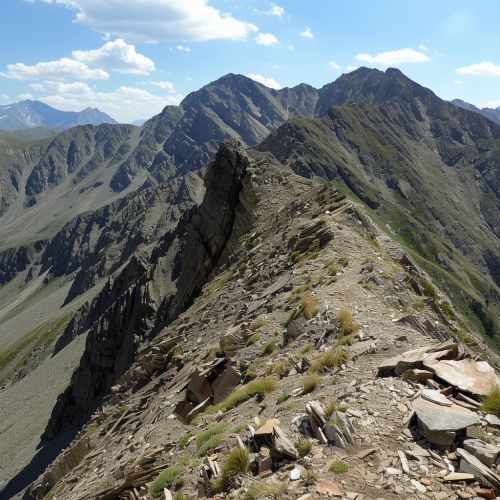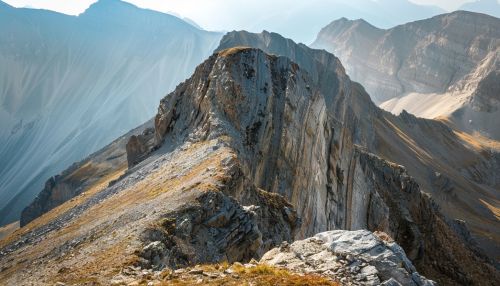Arete (Glacial)
Definition and Formation
An arete is a narrow ridge of rock which separates two valleys. It is typically formed when two glaciers erode parallel U-shaped valleys. The arete is a thin ridge of rock that is left separating the two valleys. Aretes can also form when two glacial cirques erode headwards towards one another, although frequently this results in a saddle-shaped pass, called a col. The edge is sharpened by freeze-thaw weathering, and the slope on either side of the arete steepened through mass wasting events and the erosion of exposed, unstable rock. The process of weathering and erosion can transform a knife-edge arete to a rounded ridge over time.


Notable Examples
Many notable aretes can be found in the Alpine mountain range in Europe. The Garden Arete in the UK, or the Drus Arete in the French Alps are examples of this glacial landform. The Homestretch of the Longs Peak in the Rocky Mountain National Park is another example of an arete.
Formation Process
The formation of an arete requires several geologic processes, primarily glacial erosion. The first stage in the formation of an arete is usually a steep-sided valley, carved out by a glacier. As the glacier moves, it erodes the sides of the valley, creating a U-shaped profile. This process is known as glacial erosion, and it is extremely effective at carving out large landscapes.
Over time, as the glacier retreats, it leaves behind a sharp, narrow ridge - the arete. The arete is then further shaped by other processes, such as freeze-thaw weathering and mass wasting. Freeze-thaw weathering occurs when water seeps into cracks in the rock, then freezes and expands, causing the rock to fracture and break off. Mass wasting, on the other hand, is the process by which soil and rock move downslope under the force of gravity. This can occur in a variety of ways, from slow soil creep to fast, catastrophic landslides.
Characteristics
Aretes are characterized by their sharp, narrow ridges, often with steep sides. They are typically found in mountainous regions where glaciers have been present. The size and shape of an arete can vary greatly, depending on the size of the glaciers that formed it, the type of rock that it's made of, and the subsequent weathering and erosion processes that it has undergone.
Impact on the Landscape
Aretes have a significant impact on the landscape. They are a key feature of glaciated mountain ranges, contributing to the dramatic, rugged scenery that these areas are known for. In addition, aretes can influence the flow of water in a landscape, directing streams and rivers along their base. This can lead to the formation of other glacial features, such as cirques and hanging valleys.
